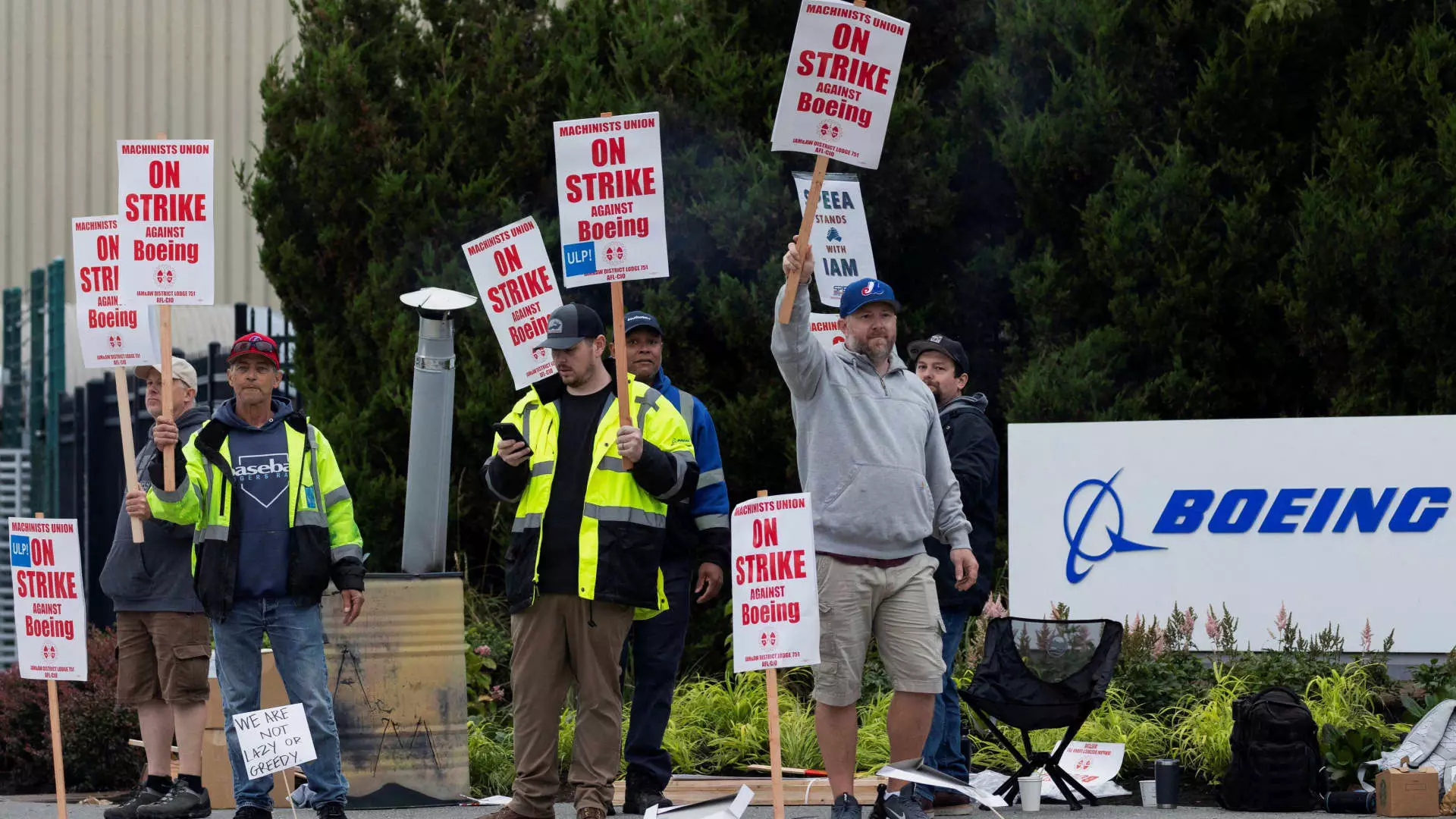Boeing is currently ensnared in a formidable crisis as its machinists engage in a strike that epitomizes the broader challenges within labor relations, economic pressures, and corporate resilience. With thousands of machinists halting work to demand fair compensation amidst escalating living costs, Boeing finds itself at a critical juncture. The ramifications of this labor dispute extend far beyond the factory floors; they impact the intricate web of suppliers, the stock market, and the company’s long-term viability, all while the aviation industry grapples with post-pandemic recovery.
The ongoing strike initiated by over 30,000 Boeing machinists is more than just a labor action; it reflects a deep-seated frustration with the financial realities of living in the Seattle area. As housing prices soar—evidenced by a staggering 142% rise in median home prices in Washington state since 2013—workers find it increasingly challenging to secure a decent standard of living. Union members note this economic strain with statements that resonate with many workers in high-cost areas: “We can’t afford to own a home,” underscoring the urgent need for better wages and benefits.
In response, machinists have been proactive in preparing for a potential protracted strike. They are contemplating alternative sources of income, ranging from delivery services to manual labor jobs, highlighting the lengths to which individuals will go to sustain their livelihoods. This struggle is intricately tied to their desire for recognition of their skills and contributions, as many express deep pride in their roles in building the aircraft that are emblematic of American engineering.
As the strike progresses into its second week, the significant financial implications for Boeing become increasingly manifest. Analysts estimate that the strike costs the company approximately $50 million each day, exacerbating the already formidable financial pressures stemming from a staggering $60 billion in debt. The burden is compounded by Boeing’s inability to turn a profit since 2018—a statistic that casts a shadow over the company’s recovery efforts.
The context within which this strike occurs is significant. Boeing recently faced severe setbacks due to manufacturing malfunctions, such as a defective door plug in its 737 Max planes earlier this year, further depleting its financial reserves. The company’s new leadership, under CEO Kelly Ortberg, has expressed commitment to restoring Boeing’s reputation, yet the ongoing strike hampers efforts to stabilize operations and build trust with both customers and employees.
Union demands extend beyond just immediate wage increases; they encapsulate calls for a comprehensive package that includes a 40% wage hike, annual bonuses, and the restoration of previously offered pensions. While Boeing has tabled an offer that includes 25% wage increases over four years, it’s evident that the disparity in expectations reflects broader labor market dynamics, particularly as the aerospace industry battles a skills shortage.
This negotiation exemplifies a broader trend in labor relations across various industries, as workers increasingly utilize their leverage to advocate for better conditions. The Biden administration’s support for both parties in negotiations signifies the federal interest in maintaining stability in a crucial sector, particularly as the aviation industry plays a vital role in the economy.
The strike at Boeing has already started to disrupt the supply chain, with suppliers facing halts in shipments as production at Boeing’s primary facilities comes to a standstill. This interruption in manufacturing not only affects Boeing’s operations; it binds the fortunes of numerous smaller suppliers to the unfolding labor dispute.
Moreover, the potential for a credit downgrade looms, which could exacerbate Boeing’s financial plight by elevating its borrowing costs at a time when it can ill afford it. Industry analysts suggest that the longer the strike persists, the more difficult it will become for Boeing to recover its operational capacity and public image. The effects of the ongoing strike ripple across the aerospace sector, creating a scenario where immediate labor disputes have lasting implications for long-term production capabilities.
As the strike continues, it offers an illuminating case study on the complexities of labor relations in the modern economy, punctuated by a confrontation between a company in financial distress and workers seeking fair compensation for their expertise. Both sides face considerable pressure; Boeing must navigate the need for fiscal responsibility while addressing the legitimate concerns of its workforce.
With negotiations ongoing and external pressures mounting, the outcome of this labor dispute will be pivotal—not only for the future of Boeing but also for the aviation industry as a whole. Achieving a mutually beneficial agreement could lay the groundwork for a more sustainable operational framework—one that recognizes the essential contributions of its workforce while ensuring the company can thrive in an increasingly competitive landscape. The future of Boeing hangs in the balance as both sides confront this critical inflection point.



Leave a Reply